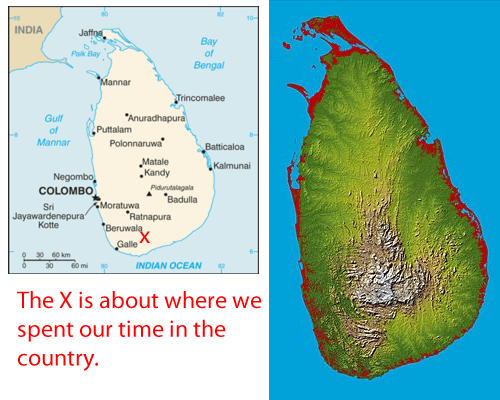Sri Lanka March 15
Sri Lanka, officially the Democratic Socialist Republic of Sri Lanka (formerly known as Ceylon), is an island country in South Asia near south-east India. Sri Lanka has maritime borders with India to the northwest and the Maldives to the southwest. Its documented history spans 3,000 years, with evidence of pre-historic human settlements dating back to at least 125,000 years. The island is 65,610 square miles and has a population of 20,287,597.
Sri Lanka is the oldest democracy in Asia. This history dates from the British approving the Donoughmore Constitution in 1931. This enabled general elections with adult universal suffrage. It was the first time a non-white country within the empires of Western Europe was given one man, one vote, and the power to control domestic affairs. The first election under the universal adult franchise, held in June, was for the Ceylon State Council.
This is still a real democracy as demonstrated by not re-electing the general who brought an end to the civil war. He was tempted to have a coup, but the Norwegians talked him out of it. He is still popular in Sri Lanka, but there were hints of corruption which even with the new president have not been erased. And reports are that torture has not been abandoned.
Colombo has been a port for over 2,000 years. They have hosted Indian, Greek, Persian, Roman, Arab, and Chinese traders. As a result, it controlled much of the trade between the Sinhalese kingdoms on Sri Lanka and the rest of the world. In the past it was the capital, but in 1982 the capital was moved to Sri Jayawardenepura Kotte, which is a suburb of Colombo. However, Colombo is the commercial and financial capital of Sri Lanka.
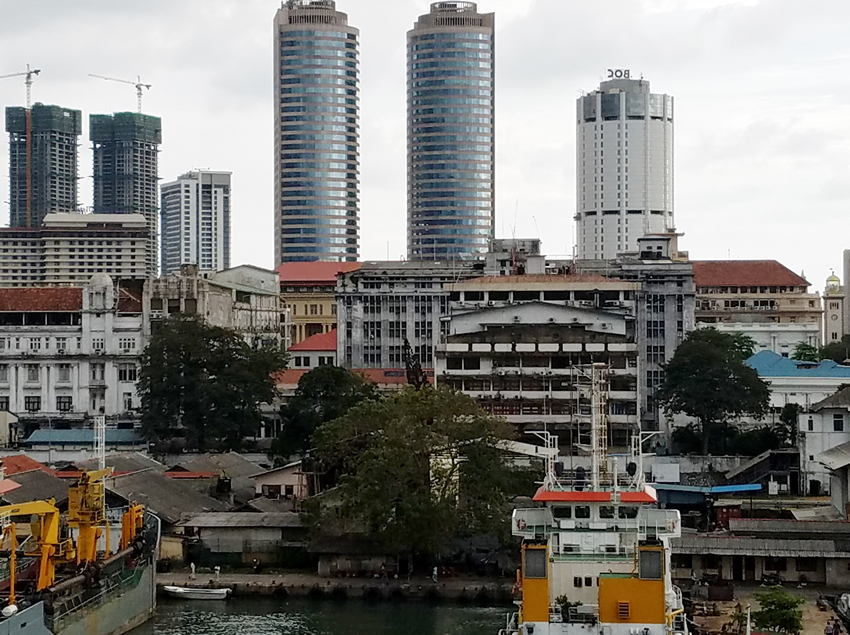
This was taken from the bow of our ship. It is a fairly good representation of the Colombo skyline.
Colombo's European history started in 1505 with the arrival of the Portuguese, who after an 18-year war with the Dutch in 1656 ceded control to them, who in turn were supplanted by the British in 1796. Differing from the Portuguese and Dutch, whose primary use of the city was as a fort, the British began constructing houses and other civilian structures around the fort.
The British found that generations under their former colonialists, had resulted in a decline in the indigenous people in administration of the city. To counteracts this, with the goal of training the local population in self-governance, the British established the Colombo Municipal Council which met for the first time in January 1866. The British are responsible for much of the planning of the present city. In some parts of the city tram car tracks and granite flooring laid during that era are still visible.
In 1948 the British granted Ceylon independence and instituted changes in laws and customs, clothing styles, religions and proper names. Despite this, the influence of the Portuguese, the Dutch, and the British are still clearly visible in Colombo's architecture. The city and its people are a mix of European clothing and lifestyles together with local customs. Ceylon's name was changed in 1972 to Sri Lanka.
Sri Lanka's recent history was marred by a thirty-year civil war, mostly a guerilla war. It was decisively ended when the Sri Lankan military defeated the Liberation Tigers of Tamil Eelam (LTTE) in 2009. Many of us remember this bloody ending when the Tigers were brutally defeated by General Rajapaksa, now the ex-president. There are estimates that up to 40,000 Tamils were killed.
There was much cause for the Tigers to revolt, one year after independence the Sinhalese government (whose population was in the majority) disenfranshised the Tamils, and pogroms against the Tamils were not unknown. After the end of the war, General Rajapaksa, who had massacred the Tamils to defeat them, became President. He appointed the Lessons Learnt and Reconciliation Commission (LLRC) to assess the conflict between the time of the ceasefire agreement in 2002 and the defeat of the LTTE in 2009.
Sri Lanka has emerged from its 26-year war to become one of the fastest growing economies of the world. I do believe that there are sincere efforts to reconciliation, but not living here I have no way of knowing. On our tour we passed a monument to the War’s Dead, that has the names of all killed in the civil war, from both sides.
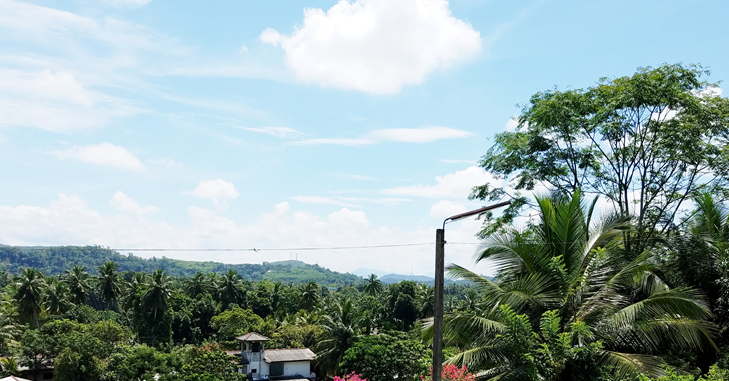
Breaking with tradition of visiting city highlights, our tour in Sri Lanka was to the countryside, not the Colombo attractions. We started with a visit to a reservoir, which they call a water tank, that collects water from their regular rains. It is used by a system of canals to irrigate over 350 acres of agriculture, some as far away as 50 to 60 km.
After walking over the dam, we saw a cashew tree. We were warned not to eat cashews that have not been roasted – apparently, they taste awful. Cashew nuts grow from the bottom of "cashew apples." The apple portion is called an "accessory fruit." The nut beneath the apple is the part most of us actually eat although the apple when ripe is edible. To make things weirder, that "nut" isn't a nut, but a seed.
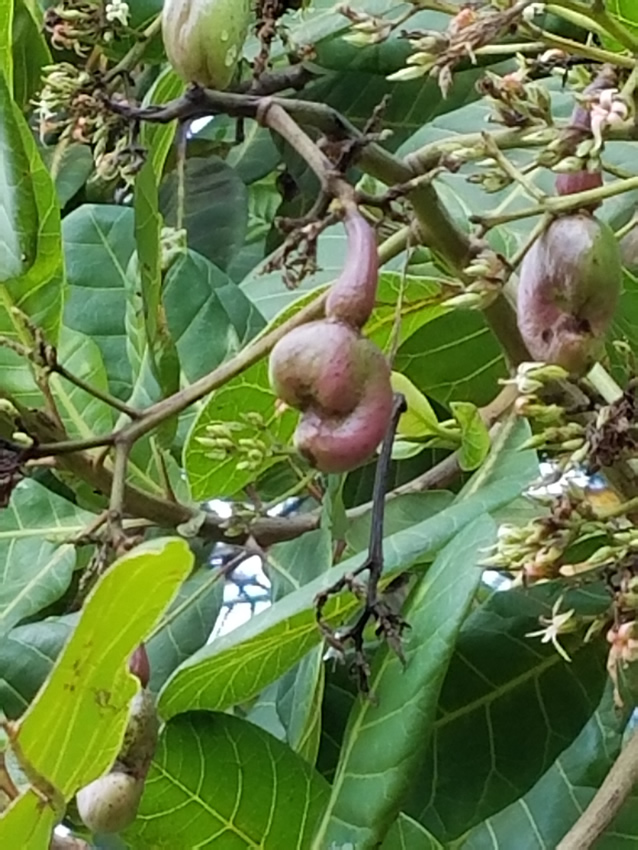
As we were walking back to the bus for our next visit we saw a woman washing clothes in the reservoir. She turned to look at us, smiled and waved. This was not unusual, people everywhere waved and smiled at us, often as we were passing on the bus.
A Buddhist temple, that we were told is "only" a little over 100 years old was our next stop. At this temple there were monks in residence. Like all Buddhist places of worship, if there is a building at all, it is only a three sided building. This temple had a reclining Buddha partially hidden by strips of curtain, with many smaller Buddhas around it, and a tall one at each end. All the Budhas had their hands together in the meditation pose.
Growing around the temple was a black pepper vine that was entwining itself around a pigeon pea (seriously that is its name) tree. Pepper corns were worth their weight in gold at the beginning of the spice trade with European powers. in the photo below their blackness does not show up too well, but the area in the red oblong are black peppers ready to be used in our pepper millls. To the left are some peppers that are green and not yet ripe.
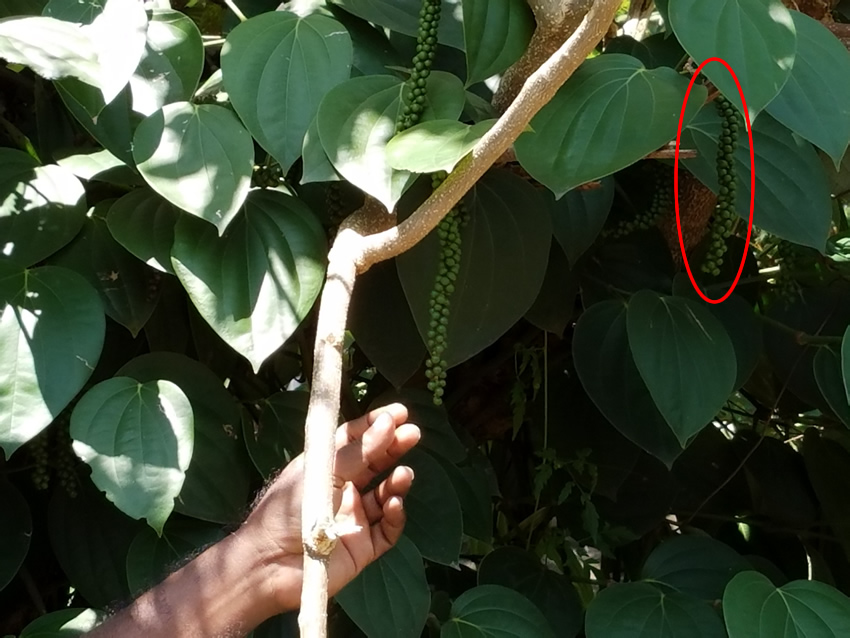
We took a tuk tuk ride, down a bumpy dirt road to a rubber plantation. The trees that we saw were 4 to 5 years old and were imported from seeds in Kew Gardens, London! As the photo below shows, the rubber tree seeds are just a little longer than an acorn. They are now able to harvest seed nuts from the trees on this farm.
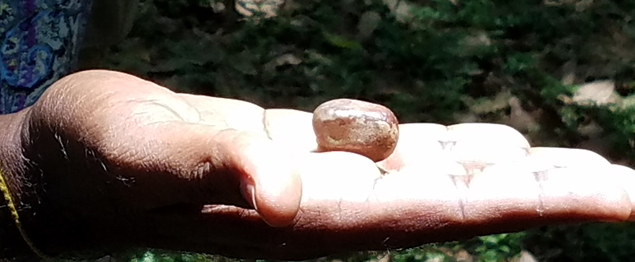
To tap a tree, a worker uses a special tool to strip the bark all the way around the trunk for about a foot, always from top to bottom, then inserts a spout, like one does when tapping a maple tree. It takes a while for the white latex to flow. First it slowly fills the spout, then VERY slowly drips a drip at a time into the funnel shaped container below. A strand of it is very elastic. Look hard in the photo below and you will see the container under the flow of latex.

A word about the tuk tuks. They are ubiquitous in Sri Lanka, and in Malaysia. They are a three wheel vehicle with room for two passengers. You see them on the busy streets in the towns and cities. Even on the dirt road, when we were riding in them there were other cars going by, which for us uninitiated was a little hairy! Tuk tuks are capable of doing about 35 mph and we are told that occasionally one tips over…

Note the lady with the umbrella, they are carried here and in Malaysia, but no one wears a mask as we saw in the SE Asia countries.
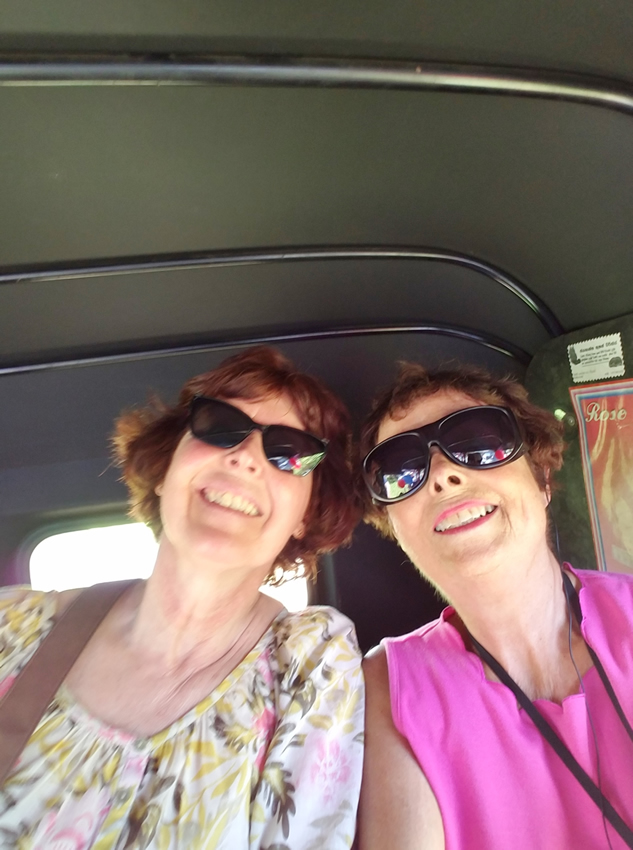
A couple of intrepid tuk tuk riders bumping along!
A visit to an agritourist farm was next. Did you know that there are hundreds of varieties of bananas? They had 123 of them on that farm. Coconut palms, of many different varieties were also there.
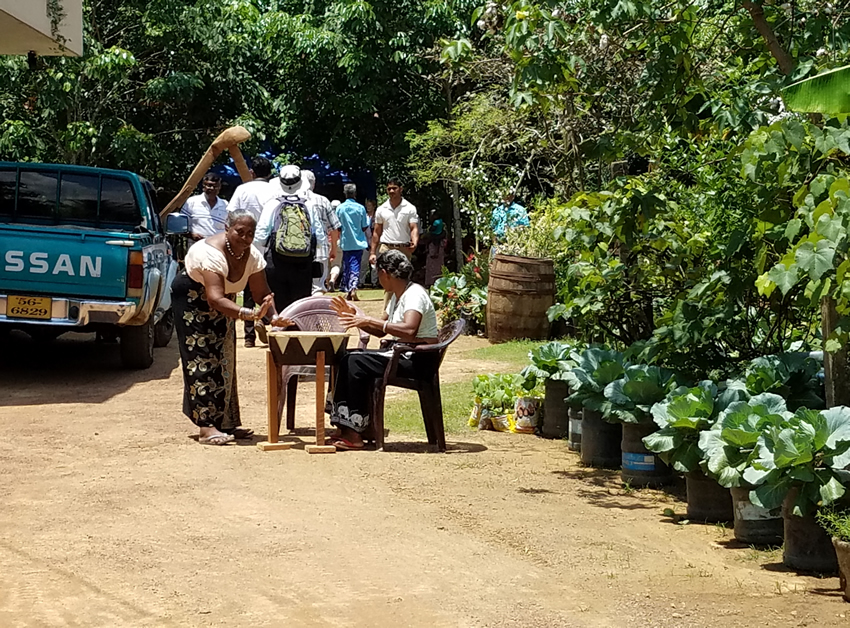
Those folks in the foreground are playing drums to welcome us, an old Sri Lankan custom
We were drummed into a beautiful tent where a marvelous buffet lunch was served. I had not eaten many of the foods before, but found them wonderful. Jack fruit salad – looked like potato salad, fried curry leaves which we were supposed to sprinkle on our food, but being dumb we ate them plain – they were delicious. I also had some stuff that looked like very finely ground green pepper. I have no idea what it was except that I wanted more. Cashew salad with a few mild spices were also on the buffet which ended with pineapple salsa. I regret that I could not get a picture of it. After the lunch we had another buffet of fruits, jack fruit, star fruit, pineapple, so many that I can’t remember. I regret that I had only one stomach to devote to the cause!
After lunch we walked through some of the banana trees, then to the pineapple fields. They cut a ripe pineapple for us, sliced it up and passed it around (as if we needed more to eat…). The photo below shows the freshly picked, ripe pineapple that we all ate part of. Note the shrubs in the background which are pineapple bushes.
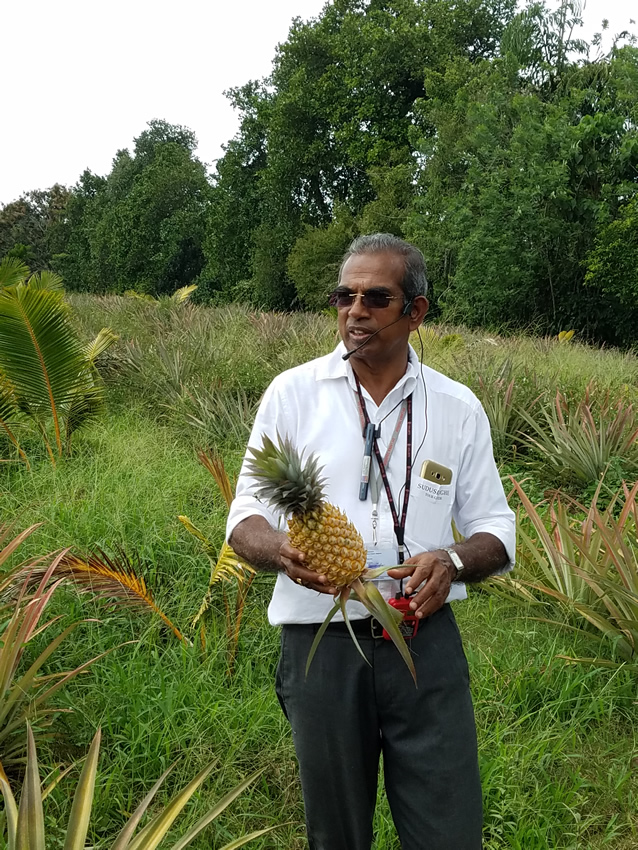
We also saw them make cinnamon sticks, which involves the bark of a branch. More interesting was watching a woman make coconut milk. She took coconut shavings, mixed them with water, mixed it with her hands and strained it into a container.
Watching coconut oil being made was also fascinating. I certainly hope that in most places the type of labor we saw to produce this is not the norm. TDried coconut shavings, each a little curved and about 4 inches long, are placed into a barrel, in the center of which is a pole that looks like a short telephone pole. Attached to this pole is a long pole at a 60 degree angle which is pushed around and around by about 5 strong men. That man in the white shirt who is circled is a counterweight. (I want his job!)
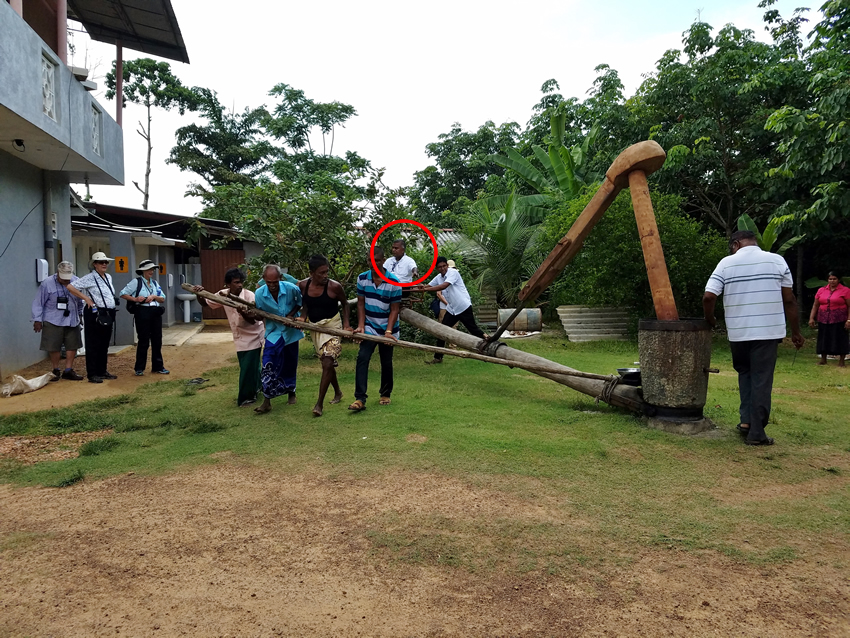
No agritourist visit in Sri Lanka would be complete without a demonstration of making the alcoholic drink (I think it is called Arawak, or something similar) from a coconut in a tree. A young man climbs up using poles which have been lashed to the tree like a ladder, reaches the coconut, uses a rope attached to a pottery bowl to pull it up from a man on the ground. Then he takes the plastic off the coconut, pours a liquid from it into the bowl and gently lowers it to the man on the ground. At this point it is 40% alcohol.
Water buffalo are still used as beasts of burden. We saw a man using one of these animals to prepare a rice field for planting.
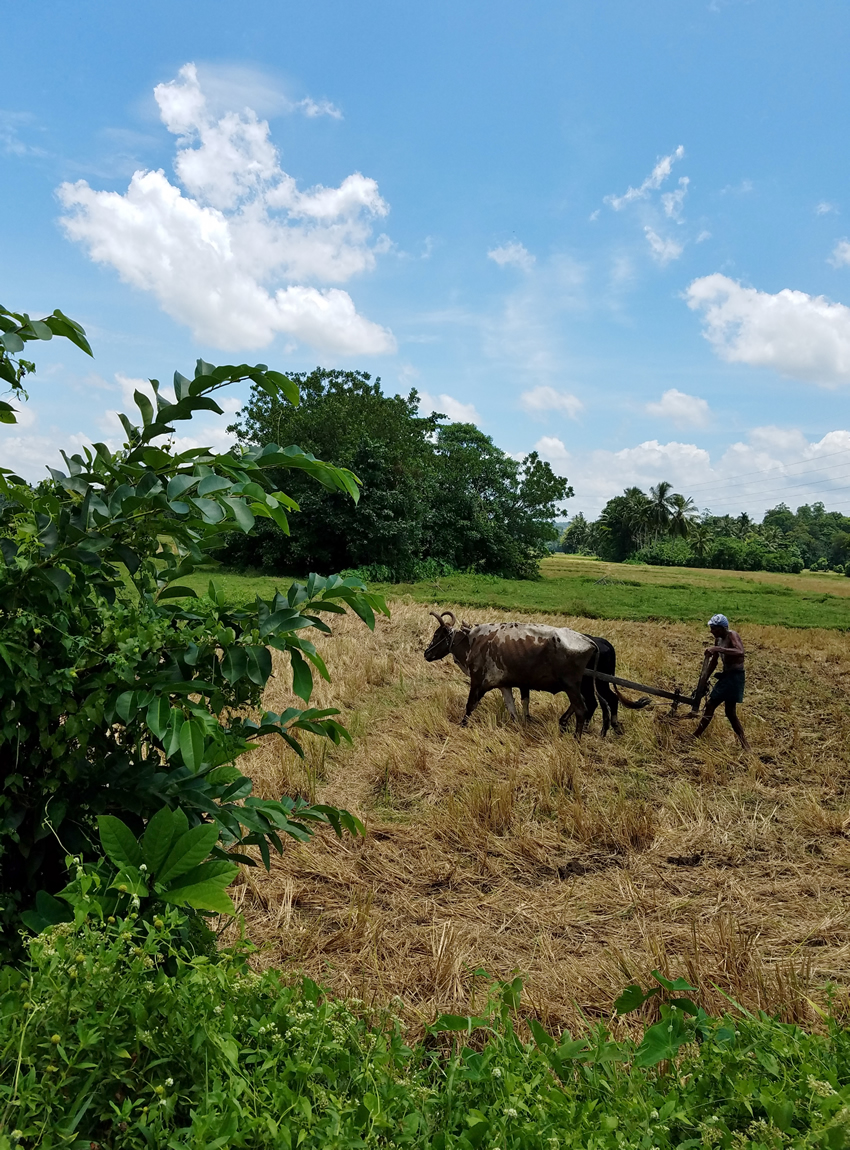
Although I would have liked to have seen some of the sights in Colombo, they would not be too different from what we have already seen and I was delighted to get out into the country. Like Vietnam, and Malaysia, we passed many small, roadside stands on our trip. Here it looked like most of them sold fruit. I have not figured out how they can make a living from this because there are so many of them.
There is poverty here, and Colombo as a city is not in the same ball park as Saigon or Kuala Lumpur. But, they are only 6 years away from a bad civil war and are now growing. I had the feeling that if I were to come back in 15 years I probably would not recognize the place. There is a vibrancy here like Malaysia.
It amazes me that like so many other countries they are engaging in land reclamation. There were evidences of this in the Colombo port.
The Colombo skyline is not remarkable, but of course they had to have a tower. It is an unusual looking structure, but to compete you have to have one. I don’t know if it is available for visitors to go up or not. As the towers we have seen compare it is not very large. But as of this moment it does not have to compete with many tall buildings. And who knows when they will have to build an even taller one to compete on the world stage.
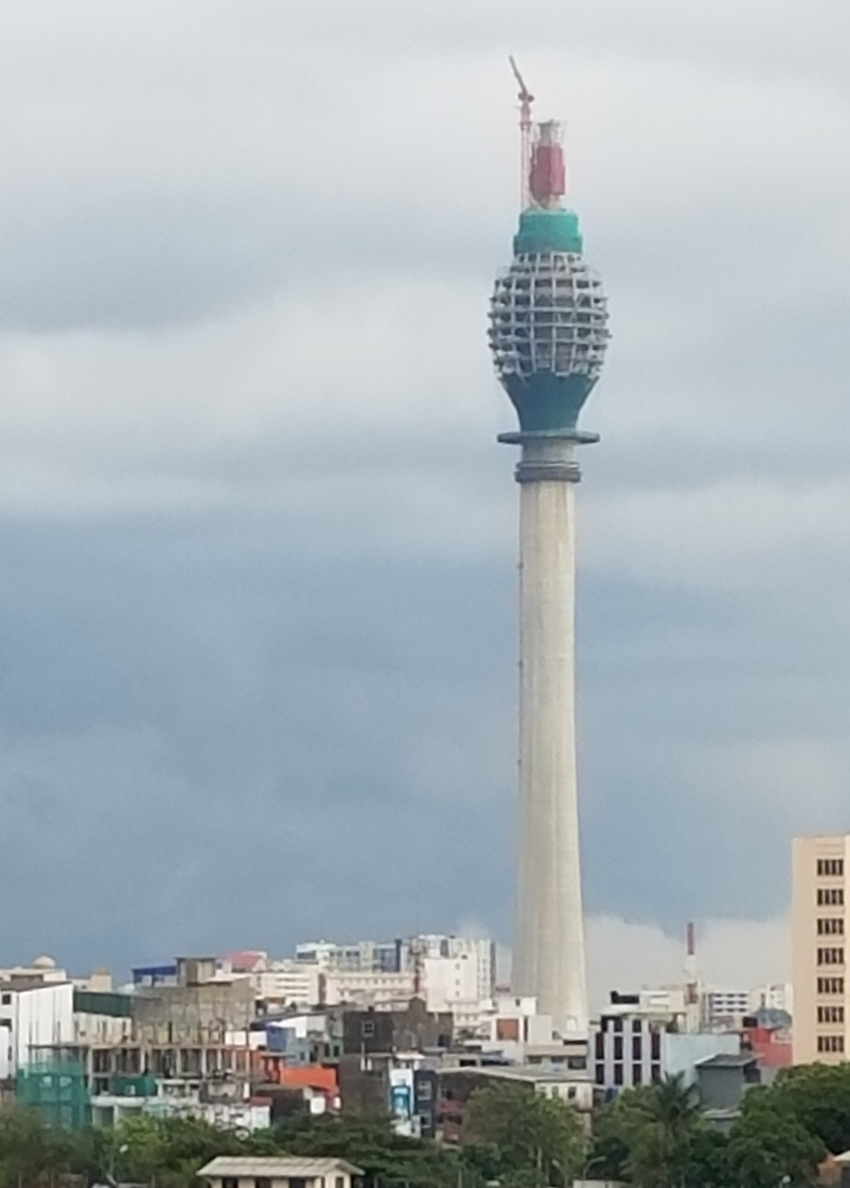
There are two official languages, Sinhalese and Tamil, but English is also taught in the schools.
However, if you get too far out of town, the school English is forgotten due to disuse. Their written language has 34 characters.
Agricultural products make up 12% of the economy. The main products are tea, rubber, coffee, sugar, and cinnamon. Its most widely known export, Ceylon tea, is considered by ISO (International Standards Organization) as the cleanest tea in the world in terms of pesticide residues. Sri Lanka is the world's 2nd largest exporter of tea. 28% of the economy is industry, mostly the manufacsture of clothing. The salaries are low compared to us and the Sri Lankan rupee is 150 to the dollar. Tourism is on the rise. There are several beaches I’ve been told and in the plateau many beautiful areas.
Gems are mined in the north, but we were told that all of these are easily counterfeited thus we should be very careful if we wished to purchase any. It was stated very strongly that Holland America would not be responsible for any purchase, gem or otherwise, that was not the advertised article. It does amaze me that some folk would try to hold HA reponsible for their stupid purchases, but then most, but far from all, of the passengers are from the U.S.
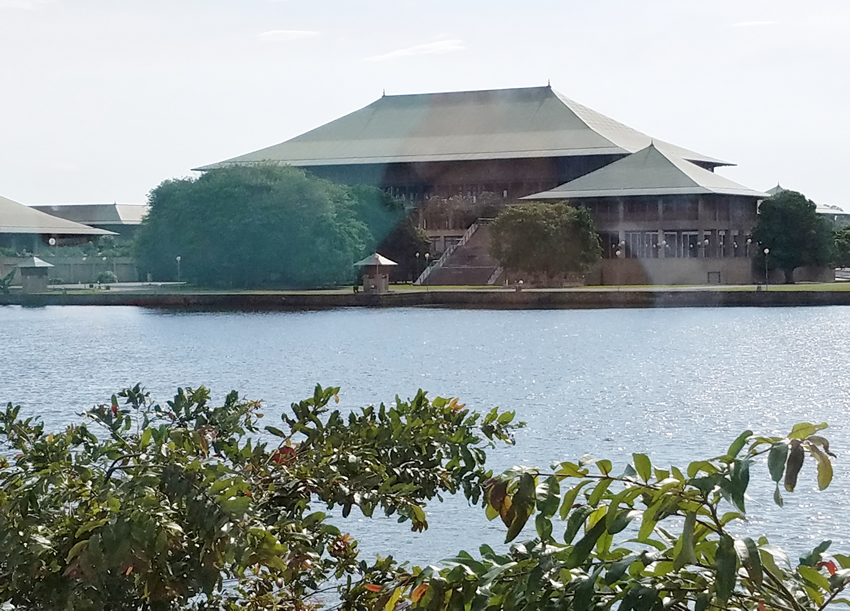
The new parliament in the new capital, pictured above, was donated by the Japanese. (We did not visit, but had a "click and go" stop to take the picture.) It is on an island in a man made lake and is connected to the mainland by a causeway. The Chinese also donated a building, but I can’t remember which one. The Asians are involved in soft aid investing in these up and coming countries, gaining influence and positive votes in the U.N.
